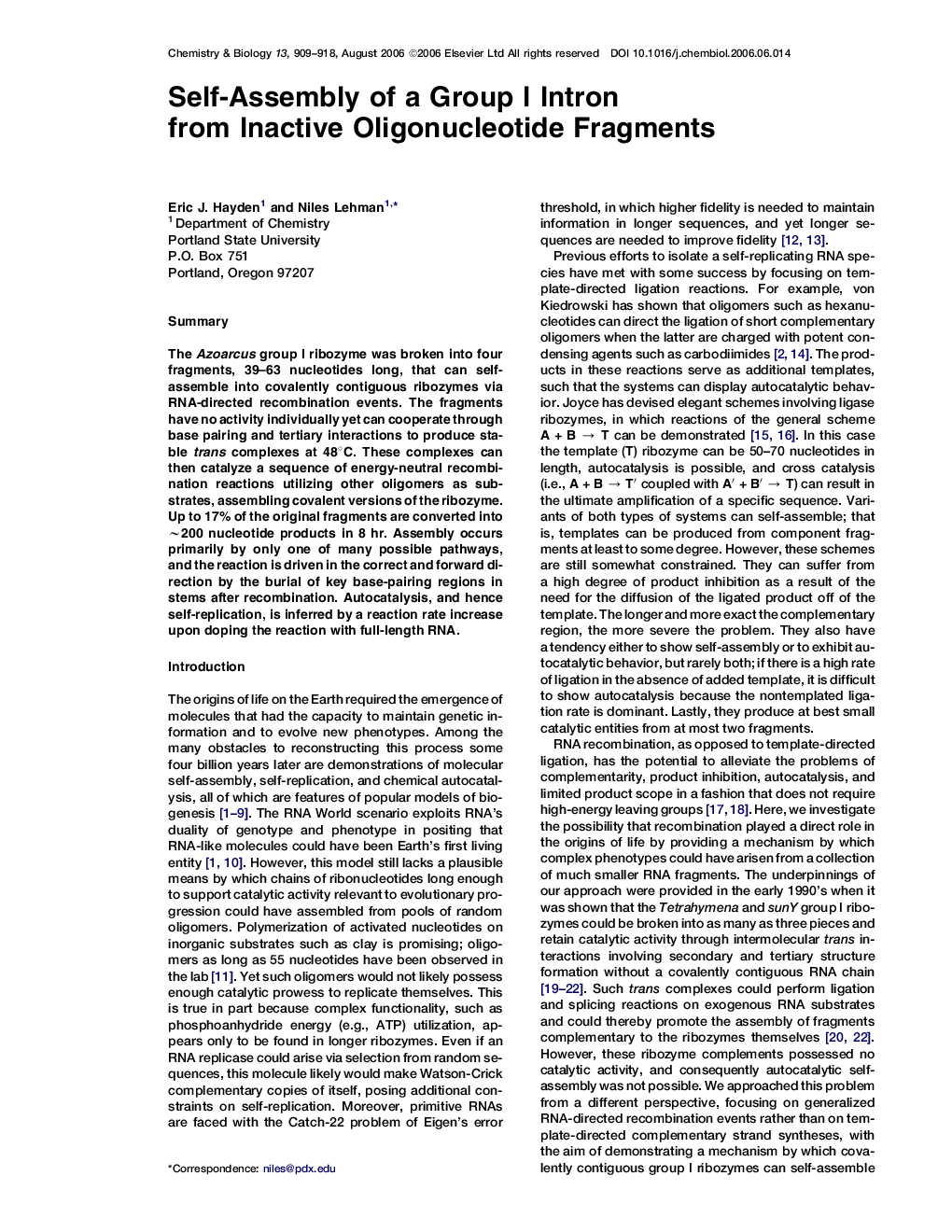| Article ID | Journal | Published Year | Pages | File Type |
|---|---|---|---|---|
| 1391504 | Chemistry & Biology | 2006 | 10 Pages |
SummaryThe Azoarcus group I ribozyme was broken into four fragments, 39–63 nucleotides long, that can self-assemble into covalently contiguous ribozymes via RNA-directed recombination events. The fragments have no activity individually yet can cooperate through base pairing and tertiary interactions to produce stable trans complexes at 48°C. These complexes can then catalyze a sequence of energy-neutral recombination reactions utilizing other oligomers as substrates, assembling covalent versions of the ribozyme. Up to 17% of the original fragments are converted into ∼200 nucleotide products in 8 hr. Assembly occurs primarily by only one of many possible pathways, and the reaction is driven in the correct and forward direction by the burial of key base-pairing regions in stems after recombination. Autocatalysis, and hence self-replication, is inferred by a reaction rate increase upon doping the reaction with full-length RNA.
